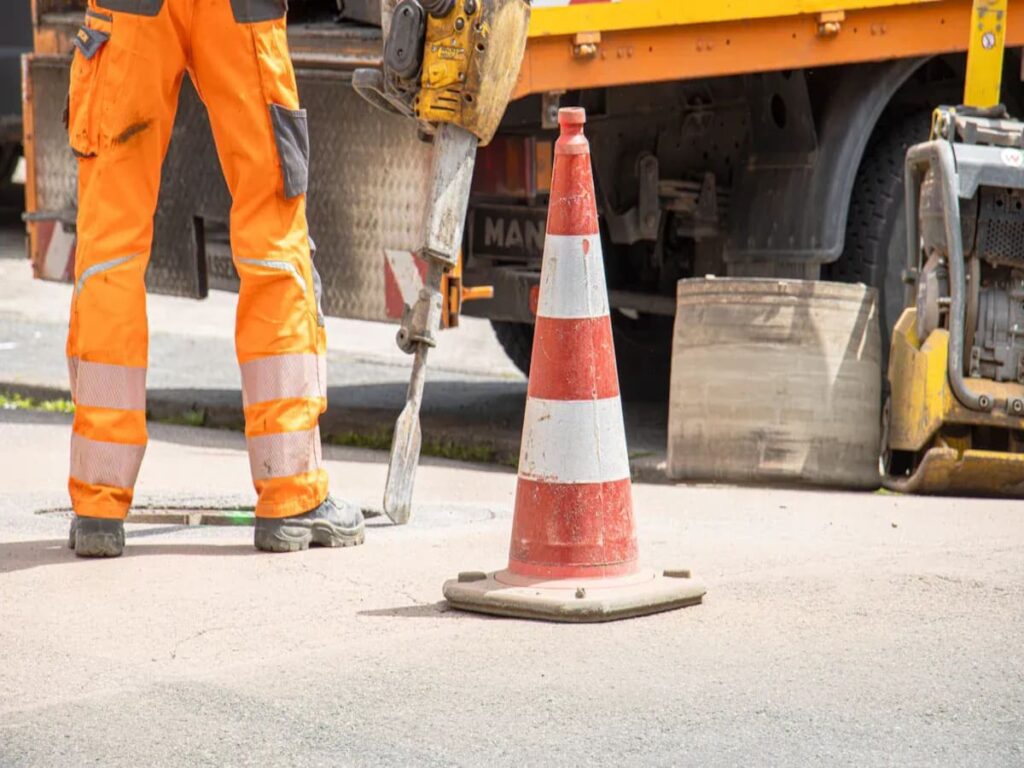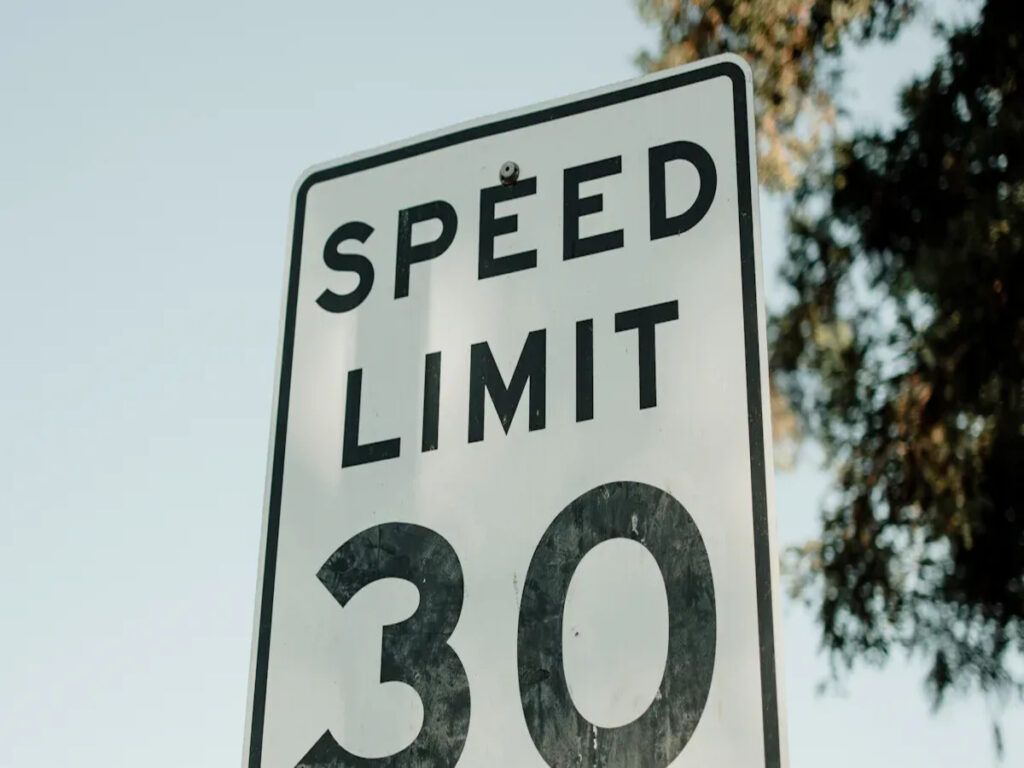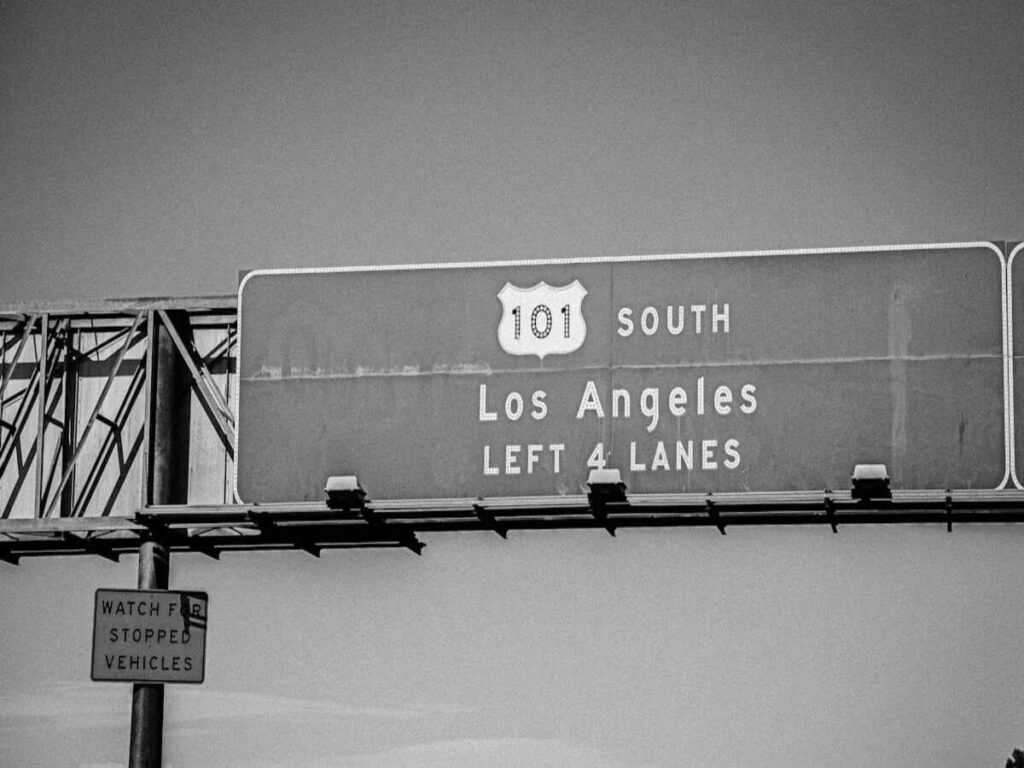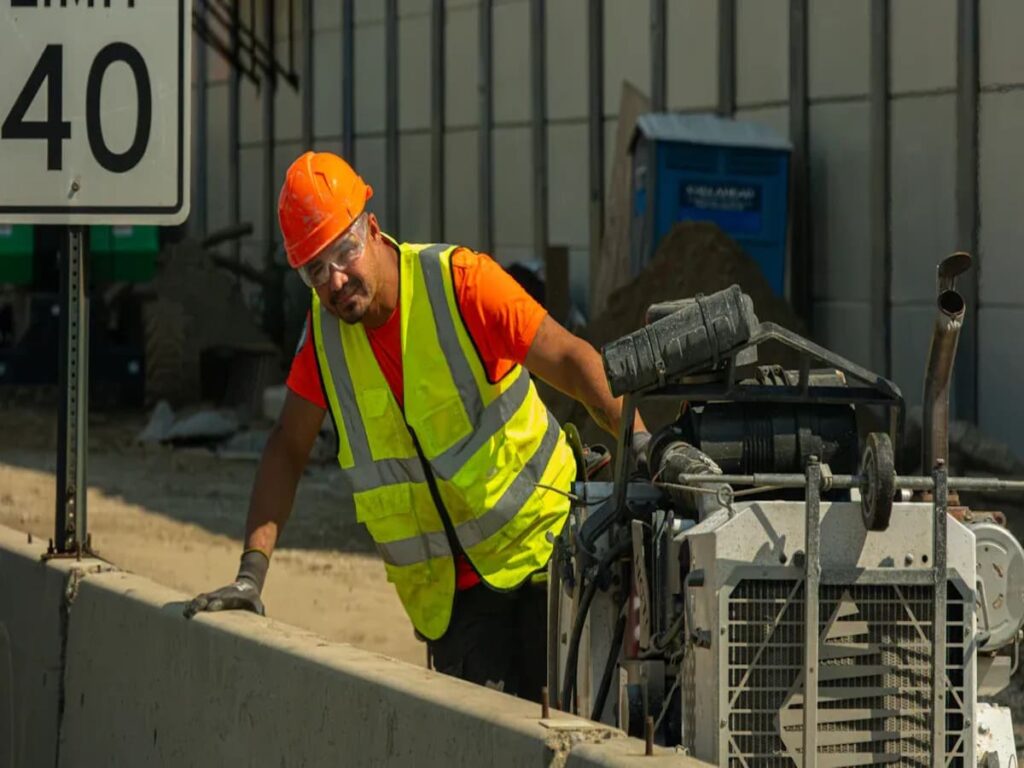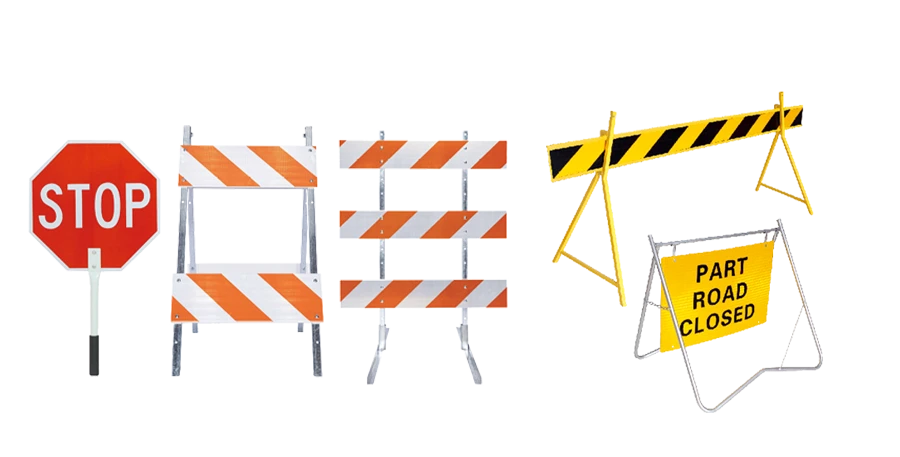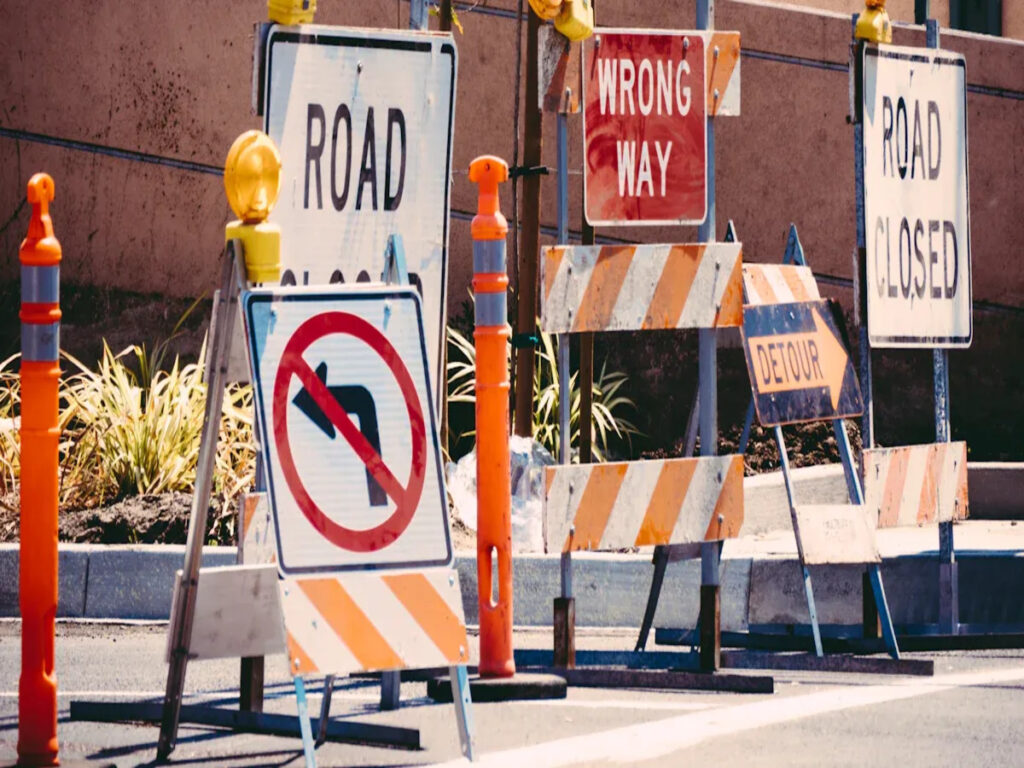
Driving on a busy road, you encounter workers repairing the asphalt. Traffic patterns can shift quickly, requiring you to rely on construction zone signs for guidance. These signs play a vital role in ensuring safety for everyone near the construction area. Some work zones are stationary, while others move along the road. Each type demands specific safety measures to protect both drivers and workers.
À OPTRAFIC, Nous fournissons Signes de la zone de construction designed for every type of work zone. Whether you’re managing a moving work zone or a stationary one, our signs are built to adapt to changing traffic patterns and ensure maximum visibility. Depuis Signes de limite de vitesse à warning signals, nous offrons durable, compliant signage solutions that help keep both drivers and workers safe. Confiance OPTRAFIC to provide the right traffic control equipment for your construction needs.
Principaux à retenir
- Know how moving and stationary work zones are different. Moving zones change places often. Stationary zones stay in one spot longer. Each type needs its own safety steps.
- Always look at construction zone signs. Des panneaux d'avertissement vous parlent des dangers. Detour signs show you new routes. Good signs help stop accidents.
- Use reflective and bright signs in stationary work zones. These signs help drivers and walkers see them anytime. Cela réduit la confusion et assure la sécurité des personnes.
- Check and fix signs in work zones often. Look for broken, dirty, ou des signes manquants. This helps everyone stay safe and know what to do.
- Use smart signs and live data updates. These tools give real-time traffic news. Ils aident les conducteurs à faire des choix plus sûrs.
Defining Work Zones
Moving Work Zones
You see moving work zones when crews fix roads or paint lines. These zones change places as the work goes on. Par exemple, a team may fix potholes along a highway. They move from one spot to another. You might see trucks, cônes, and workers moving down the road. Moving work zones can last a short or long time. Parfois, work takes just a few minutes at each spot. D'autres fois, crews move slowly for hours.
Conseil: Always look for changing signs and signals in moving work zones. Workers and equipment can move fast.
A big problem in moving work zones is where signs go. Temporary signs might be too close to permanent signs. This can make drivers confused. Par exemple, if a lane closure sign is near an End Road Work sign, you may think the work zone is finished when it is not. Signs that are clear and in the right place help keep everyone safe.
Stationary Work Zones
Stationary work zones stay in one place for a long time. You see these zones during big jobs like fixing bridges or making roads wider. Crews put up barriers, cônes, and signs that do not move each day. These zones can last a few hours or even months.
Here is a table that shows how authorities explain different types of work zones:
| Type of Work Zone | Définition |
|---|---|
| Long-term stationary | Work that stays in one spot more than 3 jours. |
| Intermediate-term stationary | Work that stays in one spot more than one daylight period up to 3 jours, or nighttime work lasting more than 1 heure. |
| Short-term stationary | Daytime work that stays in one spot for more than 1 hour in a single daylight period. |
| Short duration | Work that stays in one spot up to 1 heure. |
| Mobile | Work that moves sometimes or all the time. |
You will see stationary work zones have more permanent signs and barriers. These help guide you safely around the construction area and protect workers.
Construction Zone Signs: Types and Functions
When you drive through a construction area, you see many types of safety signage. Each sign has a special job. These signs help you stay safe and keep traffic moving.
Panneaux d'avertissement
Warning signs tell you about dangers ahead. Tu pourrais voir “Travail sur la route à venir,” “Men Working,” ou “Uneven Lanes.” These signs use bright colors and clear symbols so you notice them quickly. Warning signs help you slow down and pay attention. They remind you to watch for workers and equipment. By giving you early notice, warning signs lower the chance of accidents in construction zones.
Note: Warning signs make you more aware of hazards. They encourage you to take extra care and protect everyone near the work zone.
Detour and Directional Signs
Detour and directional signs guide you around closed roads or blocked lanes. These signs show you where to go when normal routes are not safe. You might see arrows, “DEVIATION,” ou “ROUTE BARRÉE” signes. Good placement of these signs helps you avoid confusion and keeps traffic flowing smoothly.
- Detour signs help you find safe paths during road closures.
- Directional signs show you how to move through or around the work zone.
- These signs protect workers and equipment by keeping cars away from dangerous areas.
Signes de limite de vitesse
Speed limit signs in construction zones tell you how fast you should drive. These signs often show lower speed limits to keep everyone safe. Signs that mention workers make you more likely to follow the rules. If you see speed limit signs far from the work zone, you have more time to slow down. Some zones use variable speed limit signs that change based on conditions. These signs help reduce speed differences and keep traffic steady.
| Type de signe | Réponse du conducteur | Speed Variation |
|---|---|---|
| Static speed limit signs | No big change | Higher variation |
| Variable speed limit signs | Better response | Lower variation |
Dynamic and Portable Signs
Dynamic and portable signs give you real-time updates. Tu pourrais voir flashing arrow boards or message signs that change as the work zone moves. These signs are easy to move and set up. They work well for short-term or mobile construction projects. Dynamic signs help you make quick decisions and avoid sudden hazards. Portable signs also save money and work in many situations.
| Avantage | Dynamic and Portable Signs | Signes statiques traditionnels |
|---|---|---|
| Sécurité améliorée | Oui | Non |
| Improved Driver Awareness | Oui | Limité |
| Versatilité | Oui | Non |
Safety signage in construction zones uses colors and symbols that stand out. This helps you recognize changes in the road and react quickly. When you follow construction zone signs, Vous aidez à garder les routes en sécurité pour tout le monde.
Challenges in Moving Work Zones
Changing Locations
Working in moving zones is hard. Crews change spots along the road. Signs have to move with them. You need to update signs often. Drivers must know where the work zone starts and ends. If you forget a sign or put it in the wrong place, Les conducteurs sont confus. Confused drivers can cause accidents. Portable barriers and dynamic signs help with new hazards. These tools warn drivers as the work zone moves.
Moving work zones need signs that are clear and updated. You keep everyone safe by watching where you put signs.
- All signs should look the same and follow the rules.
- Make sure signs are easy to see, even if drivers are distracted.
- Tell drivers about changes in traffic patterns fast.
If you do not handle these problems well, safety issues go up. Work zone deaths went up by 11% depuis 2020 à 2021.
Sign Visibility
Seeing signs is very important for driver safety. If drivers miss signs, they may not slow down or change lanes. Bad visibility causes more crashes. Placez des panneaux là où les conducteurs peuvent les voir de loin. Utiliser couleurs vives and lights to get attention. Dynamic signs and flashing arrow boards work well in moving zones.
| Description des statistiques | Valeur | Source |
|---|---|---|
| Percentage of work zone crashes caused by speeding in Texas | 42% | Texas Crash Data, 2001 |
| Percentage of work zone crashes caused by speeding in Kansas | 25% | Bai & Li, 2007 |
| Percentage of work zone crashes caused by speeding in California | 49% | NHTSA, 2018 |
| Speed variance associated with increased crash rates | Directly associated | Quddus, 2013 |
| Higher crash rates linked to speed variance | Oui | Domenichini et al., 2017 |

Gestion du trafic
You need to control traffic around moving work zones. Drivers need clear directions so they do not get confused. Use portable barriers to guide cars safely. Panneaux à messages dynamiques help you give new instructions as the work zone moves. Good traffic management keeps speed differences low and helps everyone stay safe. You help make sure drivers and workers are safe during construction.
Challenges in Stationary Work Zones
Long-Term Disruption
When a stationary work zone stays for weeks or months, it causes problems. Conducteurs, piétons, and workers deal with changes every day. Roads might close or change, which leads to delays. People can get confused by these changes. You need to share updates with everyone often. Si vous ne le faites pas, safety can get worse.
Here is a table that lists the biggest challenges in long-term stationary work zones:
| Défi | Description |
|---|---|
| Communication et coordination | You must tell everyone what is happening to avoid mistakes and keep traffic moving. |
| Traffic Control Measures | Strong traffic control keeps workers and drivers safe for the whole project. |
| Signage Maintenance | Update signs often so people know about new dangers or changes. |
Conseil: Have regular meetings and give updates to keep workplace safety strong during long-term construction.
Permanent Signage Needs
Stationary work zones need signs that last a long time. Use signs that are easy to see and do not break easily. Signs should be clean and easy to read. Check signs often and replace broken ones fast. Permanent signs show speed limits and safe paths. Good signs help keep people safe and stop confusion.
- Use reflective materials so signs are easy to see at night.
- Put signs where drivers and pedestrians can see them from far away.
- Change signs when traffic patterns change.
Pedestrian and Driver Safety
You need to keep both pedestrians and drivers safe in stationary work zones. Many accidents happen when people miss signs or do not follow warnings. Dans 2023, 176 pedestrians died inside work zones. Forty percent of these deaths happened in places with speed limits of 45 mph ou moins. Most working pedestrians who died were hit by cars that drove into the work zone. Dans 2019, 45% of worker deaths at road construction sites happened when vehicles hit workers on foot.
| Année | Décès des piétons | Description |
|---|---|---|
| 2018 | 38% | Pedestrians killed while working in road or utility zones |
| 2023 | 176 | Pedestrians struck and killed inside a work zone |
| Pourcentage | Description |
|---|---|
| 80% | Working pedestrians killed by a motorist incursion into the zone |
You can make workplace safety better by using barriers, signes clairs, and safe walkways. Always remind drivers to slow down and watch for people near construction.
Best Practices for Construction Zone Signs
Moving Zone Strategies
You face special challenges in moving work zones. The work area shifts often, so your signs must move too. You need to keep drivers alert and informed at every stage. Start with advance warning signs like “Travail sur la route à venir.” Place these signs before the work zone so drivers have time to react. Le Manuel sur les dispositifs de contrôle de la circulation uniformes (Mutcd) says you should put warning signs where drivers can see them early. Always place the first sign, tel que “Travail sur la route à venir,” at the start of the zone.
- Put temporary traffic control signs on the right side of the road.
- Pour une sécurité supplémentaire, add signs on both sides if needed.
- Use portable supports or mount signs above barricades.
- Make sure sign supports do not block sidewalks or bike lanes.
- Pour les travaux courts, use portable signs. For longer jobs, use post-mounted signs.
- Vehicle-mounted signs should be at least 4 pieds au-dessus du sol.
Dynamic speed limit signs and advance warning systems help a lot in moving zones. These tools adjust speed limits and give real-time updates. They help drivers slow down and keep a safe distance from each other. You can see the benefits in the table below:
| Métrique | Change |
|---|---|
| Average approaching speed | Diminué de 2.25% |
| Headway distance | Augmenté de 19.02% |
| Lane-changing maneuver start point | Advanced by 42.8 m |
Conseil: Use flaggers to guide traffic when needed. Flaggers help drivers understand where to go and when to stop.
You should also adjust sign spacing based on the road type. Dans les villes, space signs 4 à 8 times the speed limit in feet. On rural roads, utiliser 8 à 12 times the speed limit. This helps drivers see and react to each sign in time.
Stationary Zone Strategies
Stationary work zones stay in one place for a long time. You need signs that last and stay visible. Use high-visibility, reflective signs so drivers can see them day and night. Place warning signs far enough ahead of the work zone to give drivers time to slow down. Mark detours clearly with arrows and “DEVIATION” signes. This helps drivers find safe routes around the work area.
- Use concrete barriers and cônes to guide traffic.
- Place signs where both drivers and pedestrians can see them.
- Make sure signs are clean and not blocked by equipment or debris.
- Change signs when traffic patterns change.
Note: Reflective signs work best at night or in bad weather. They help drivers see the work zone from far away.
You should also create safe walkways for pedestrians. Mark these paths with clear signs and barriers. This keeps people out of danger and away from moving vehicles.
Sign Placement and Maintenance
Proper sign placement and regular maintenance keep everyone safe. You must check your signs often to make sure they work as planned. Suivez ces étapes pour garder vos signes en forme supérieure:
- Inspect all site signage every week. Look for damaged, manquant, or outdated signs.
- Replace broken or missing signs right away. Keep spare signs on site for quick fixes.
- Update signs at each new phase of construction.
- Check signs after storms or bad weather to spot any damage.
- Clean signs to remove dirt or debris that could hide messages.
- Keep a log or map of all sign locations for easy tracking.
- Make sure your signs always meet local rules and standards.
Alerte: Signs that are hard to see or out of place can cause confusion and accidents. Regular checks help you avoid these problems.
You play a key role in keeping work zones safe. When you follow these best practices, Vous aidez les conducteurs, ouvriers, and pedestrians stay safe every day.
Compliance and Legal Considerations
Normes réglementaires
You have to follow strict rules for construction zone signs. Le manuel sur les dispositifs de contrôle de la circulation uniformes (Mutcd) and state agencies make these rules. These rules help keep drivers and workers safe. Signs must use the right colors, formes, et symboles. Warning signs in work zones use black letters on orange. You can add orange flags or flashing lights if you want. Do not let flags or lights cover the sign face. All signs must be easy to read and placed where drivers see them.
| Aspect | Description |
|---|---|
| Définition | Traffic control devices include signs, signaux, marques, and other devices. |
| Conformité | All devices must follow the Manual’s rules. |
| Sign Characteristics | Signs use words, symboles, et des flèches. |
| Color Standards | Regulatory signs use set colors; warning signs use black on orange. |
| Use of Flags | Orange flags or flashing lights may be used, but must not block the sign. |
Conseil: Always check local and state rules before putting up new signs.
Risques de responsabilité
If you do not use clear work zone safety signs, people can get hurt. Bad signs and weak warnings can cause crashes. Drivers may not know about lane changes or dangers. If signs are not clear, drivers may not be ready for changes. Bad roads and workers nearby make injuries more likely. You can lower these risks with clear signs, good lights, and strong barriers.
- Bad signs and weak warnings can cause crashes.
- Unclear signs do not prepare drivers for changes.
- Bad roads and close workers make injuries more likely.
- Clear and visible signs help stop accidents.
- Safety checks and strong barriers protect everyone.
Alerte: If you ignore these risks, you could get in legal trouble or get fined.
Inspection Protocols
You need to check your signs often. Regular checks help you follow all the rules. Inspections help you find problems before accidents happen. You keep your site safe by checking for damage, saleté, or missing messages. Safety audits help you catch problems early. What you learn from audits helps you make better safety plans and training.
- Inspections help you follow rules and avoid fines.
- Regular checks find problems before accidents happen.
- Safety audits keep your site safe and up to code.
- Inspections make sure signs stay clear and easy to see.
- Audit results help you make better safety rules.
Note: Make inspections a habit to keep everyone safe and avoid legal trouble.
Technology and Safety Enhancements
Smart Signage Systems
New technology helps make work zones safer each year. Smart signage systems use digital screens and sensors to keep you updated. These systems help drivers and workers stay safe.
- Navigation apps and phones gather data to plan safer roads.
- Safety gear with sensors warns workers if vehicles get close.
- Digital signs show quick updates about dangers like bad weather.
- Interactive signs let you check safety steps or emergency plans on site.
- Bright digital signs are easy to see, Même quand il fait sombre.
- On-site screens can quiz workers on safety rules and track who follows them.
Smart work zones use these tools to stop crashes and keep traffic moving well.
Real-Time Data
Real-time data changes how you drive in construction zones. Intelligent Transportation Systems (C'EST) give you live updates.
- Traffic signs change messages for road or weather changes.
- Digital boards tell you about traffic jams, dangers, or new speed limits.
- ITS can show safer ways to go, so you avoid busy places.
- When you know what is coming, you make safer choices while driving.
- Traffic monitoring systems have lowered rear-end crashes by 45% Dans les zones de travail actives.
These tools help you and workers stay safe by sharing the right info at the right time.
Automated Enforcement
Automated enforcement uses cameras and sensors to catch speeding or unsafe driving in work zones. This technology helps lower rule-breaking and accidents.
| Program Location | Reduction in Speeding Violations | Reduction in Accidents |
|---|---|---|
| Maryland | Sur 80% | Significatif |
| Illinois | Impressive | Significatif |
| Virginie | Impressive | Significatif |
Dans le Maryland, automated speed enforcement cut speeding by over 80%. Some programs saw a 90% drop in cars going too fast. One partnership with police led to a 78% drop in speed tickets and a 50% drop in cars breaking the speed limit. When you see these systems, you know safety matters most.
Safety Measures and Case Studies
Worker Safety Protocols
You keep construction zones safe by following safety protocols. Safety signage gives warnings about hazards and tells you what to do. When you see signs about personal protective equipment (EPP), you know safety is important. High-visibility clothing helps people see you near moving vehicles. Advance warning systems tell you about changes in traffic or work areas.
Conseil: Always look at signs before you start work. Signs show dangers and what gear you need.
Safety signs work with other rules to make things safer. Daily safety meetings remind you about important rules. Signs show evacuation routes and emergency equipment. This helps you act fast in emergencies. You also see signs that tell you who to report hazards to, so problems get fixed quickly.
Here is a table that shows how safety protocols and signage work together:
| Safety Protocols | How Signs Help You Stay Safe |
|---|---|
| Transportation Management Plan | Warning signs guide drivers and protect workers. |
| Proper Traffic Control | Signs alert drivers to changes, keeping you safe. |
| Separate Work Areas | Signs mark different zones, réduction des accidents. |
| Équipement de protection personnelle | Signs remind you to wear safety gear. |
| Awareness of Surroundings | Signs highlight hazards, keeping you alert. |
| Competent Person on Site | Signs show who to contact for safety concerns. |
| Daily Safety Meetings | Signs reinforce safety messages from meetings. |
Lessons from Case Studies
You learn lessons from real construction zone projects. Good communication with clear signage helps drivers and workers avoid confusion. Bright and reflective signs help people see better at night or in bad weather. Teams using smart technology and real-time data can change traffic plans quickly. This helps stop traffic jams and keeps everyone safer.
- Clear safety signs help drivers and stop wrong turns.
- Fast updates between teams help avoid delays during problems.
- Changing plans with real-time data makes things safer.
Studies show poor signage and drivers not paying attention cause many accidents. Good signage could stop up to 40% de ces incidents. Confusing work zone safety signs can cause wrong-way crashes and make construction companies responsible. When you use clear, well-placed signs, you help lower accidents and keep everyone safe in the work zone.
Alerte: Good signage does more than follow rules. It saves lives and lowers accident risks every day.
You help keep roads safe by using construction zone signs. Studies show rumble strips and dynamic speed displays slow cars down in work zones:
| Contre-mesure | Effect on Speed Reduction |
|---|---|
| Grondement | Strongest reduction in speeds |
| Dynamic Speed Displays | Localized effects on speeds |
To make things safer, experts say you should:
- Put up signs that are easy to see and read.
- Check signs often and fix them when needed.
- Make a Traffic Control Plan and watch how drivers act.
Keep working hard to stay safe and always look for ways to get better.
FAQ
What is the difference between a moving and stationary work zone?
You see moving work zones shift along the road, like during paving. Stationary work zones stay in one place, such as bridge repairs. Each type needs different signs and safety steps.
Why do construction zones use orange signs?
You notice orange signs because they stand out. Orange means caution. Workers use these signs to warn you about changes or dangers in the road.
How do dynamic signs help in work zones?
Dynamic signs show real-time updates. You get new messages about lane changes or speed limits. These signs help you react quickly and stay safe.
What should you do when you see a speed limit sign in a work zone?
You should slow down right away. Lower speeds protect workers and drivers. Speeding in work zones causes more crashes.
Conseil: Always watch for new speed limits and follow them

